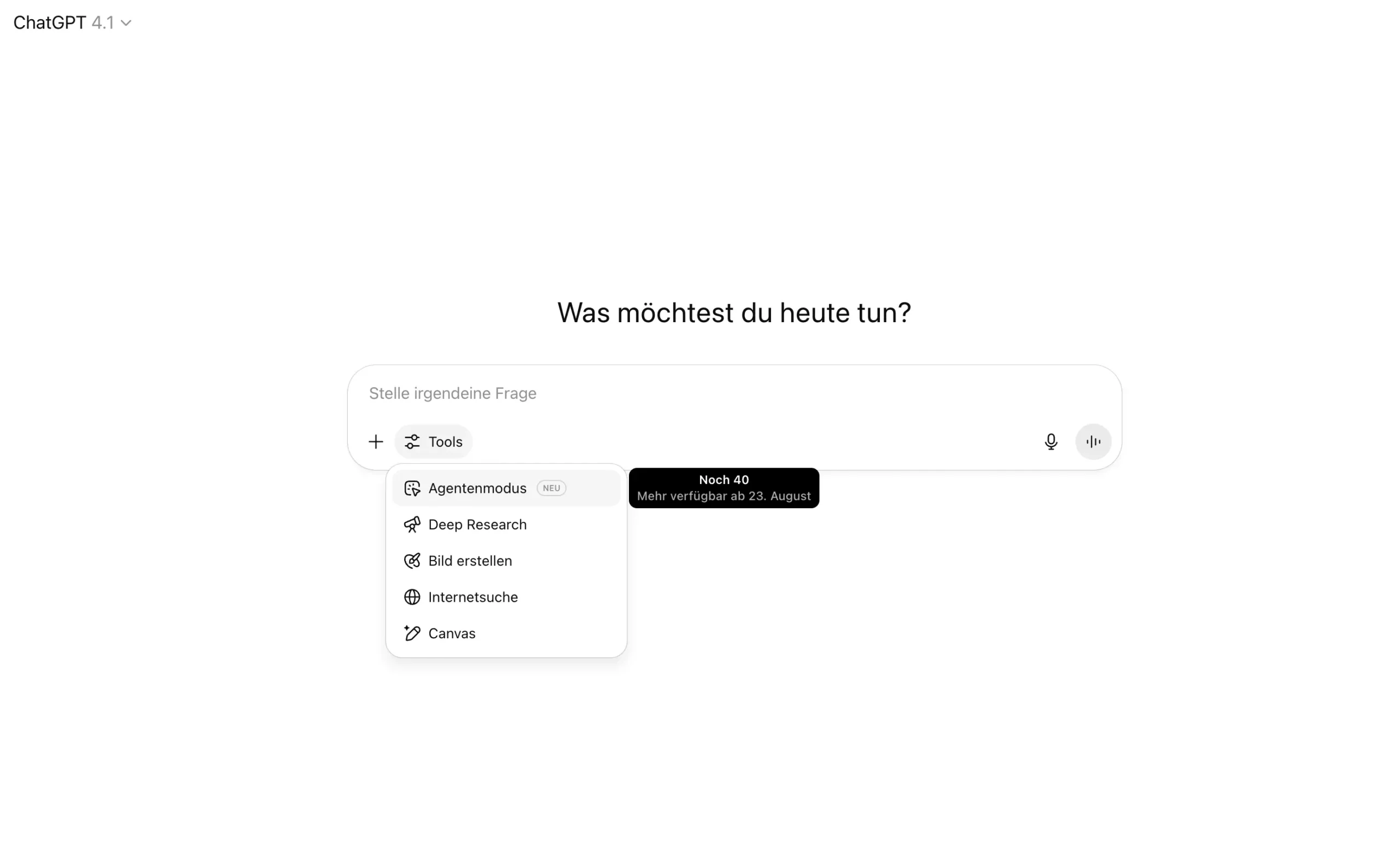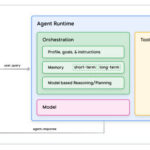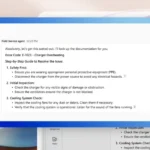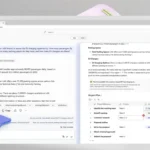ChatGPT agents are revolutionizing the way we work with AI by going beyond simple chatbots and taking on complex tasks on their own. This overview shows you how you can use these powerful tools effectively for your work processes.
- Autonomous execution of complex tasks is the core benefit of ChatGPT Agents – they can plan and act independently without needing your direction at every step.
- Integration with external tools significantly expands the agents’ capabilities by allowing them to access up-to-date data and perform direct actions such as sending emails or booking appointments.
- For marketing teams, agents offer particularly valuable applications for automated content creation, data analysis and campaign optimization based on real-time feedback.
- When choosing the right agent, you should pay attention to clear task definition and authorization control to ensure both optimal results and data security.
- The future of agents lies in personalization – the better they understand your individual workflows and preferences, the more valuable they become as digital assistants in your day-to-day work.
In the following article, you will learn in detail how to configure ChatGPT Agents for your specific requirements and how to use them optimally.
Imagine having a personal assistant working for you around the clock – whether in marketing, customer support or product development. This is exactly what ChatGPT Agents promise: they take on recurring tasks, think proactively and can be individually adapted to your processes.
This is no longer a dream of the future. according to Bitkom, 74% of companies in the DACH region are already testing AI-based tools – and most of them will come across ChatGPT Agents sooner or later.
Why? Because they not only save you time, but also automate routine processes so that you can focus on creative strategies again.
What you can expect here:
- Practical examples of the use of ChatGPT agents in everyday (digital) marketing activities
- A compact overview of functions, interfaces and limits
- Step-by-step instructions to get you started – including copy & paste prompts
- 💡Tip boxes from real projects and FAQs for quick reference
After just a few minutes, you’ll not only have demystified the buzzword, you’ll also know how to use ChatGPT Agents on an experimental basis straight away – without any extra training or hype.
Let’s get started: Discover how smart AI agents can now take your workflow to the next level.
What are ChatGPT Agents and how do they work?
ChatGPT Agents are revolutionizing the way we work with artificial intelligence. These intelligent assistants go far beyond simple chatbots and can handle complex tasks independently.
Understanding the technical basis
ChatGPT Agents work in a virtual computing environment that seamlessly connects multiple tools. Unlike traditional chatbots that only respond to text, agents can actively interact with websites, execute code and edit files.
The agent architecture is based on three core components:
- Visual web browser for clicks, forms and navigation on websites
- Text-based browser for research and content analysis
- Code execution terminal for data processing and calculations
Dynamic tool selection in action
What makes ChatGPT Agents special is that they automatically select the right tool for each subtask. When placing an online order, they use the visual browser for the checkout process, while they use the text browser for price comparisons.
This intelligent tool selection is achieved through continuous state management – the agent remembers the context between different tools and enables seamless switching between them.
Multi-step workflows in practice
ChatGPT agents break down complex jobs into individual work steps and carry them out autonomously for up to 60 minutes. A typical workflow runs like this:
- Task analysis: breaking down the job into sub-steps
- Tool assignment: Selection of the optimum tools for each step
- Execution: Step-by-step processing with intermediate results
- Output: Finished documents or reports
💡 Tip: Structure your prompts clearly with a target, desired format and time frame. Example: “Create an Excel table with a competitor analysis for fitness apps, including prices and ratings, by tomorrow.”
ChatGPT agents transform complex workflows into automated processes, saving valuable time for creative tasks. The combination of a virtual computer environment and intelligent tool selection makes them powerful digital assistants for everyday work.
Core functions of ChatGPT Agents in detail
ChatGPT Agents revolutionize automated task processing through three core components: visual web browsing, code execution and app integration. These features work together seamlessly, enabling complex workflows that previously required multiple tools.
Web browsing and visual interface
The visual browser system is fundamentally different from traditional text crawlers. Agents interact with web pages like humans do:
- Clicking on buttons and links
- Filling in forms and search fields
- Navigating through multi-step checkout processes
- Screenshots and visual element recognition
The decisive advantage lies in the dynamic change between visual and text-based navigation. For e-commerce tasks, the agent uses GUI interactions for product selection and shopping cart management, while text mode is activated for efficient content analysis during searches.
Limitations with complex interfaces
Challenges arise with dynamic websites with JavaScript-heavy elements. Current tests show an error rate of 34 percent for complex forms, especially for real estate portals or configurable product pages.
Code execution and data processing
The integrated Python environment enables comprehensive data processing directly in the agent workflow:
- File upload: CSV, PDF, Excel and image files are analyzed automatically
- Data analysis: Statistical evaluations, visualizations and calculations
- Export functions: Results in Excel, PowerPoint or PDF format
💡 Tip: Particularly effective for recurring reports – the agent allows you to use templates and only use current data.
Connected apps and synchronization
Available integrations include Google Workspace, Microsoft OneDrive and other cloud services. Authorization management works via OAuth authentication with granular access control.
Real-time synchronization ensures that changes are immediately visible in connected systems. Agents respect existing user rights and can only access approved files.
Legal note: For GDPR-relevant data processing, companies must include data transfer to OpenAI in their data protection declarations and conclude corresponding order processing contracts.
These three core functions transform ChatGPT Agents from simple chatbots into fully-fledged digital assistants that independently process complex tasks from the first step to the formatted end result.
Practical areas of application in various industries
ChatGPT Agents are already revolutionizing concrete work processes in German companies. The intelligent assistants take on complex, multi-step tasks and deliver measurable increases in efficiency.
Business operations and corporate management
Competitive intelligence is being redefined by automated market analyses. Agents search competitor websites, extract price data and create comparative reports in Excel format.
In financial modeling, they update spreadsheets with live data while preserving existing formulas and formatting. Meeting preparations are made by cross-referencing calendars, email histories and document repositories.
💡 Tip: IBM reduced false positive IT alerts by 40 percent through autonomous incident correlation of the agents.
Marketing and sales
Content creation and campaign planning benefit from cross-platform integration. Agents research target group insights, create editorial plans and synchronize them automatically with social media managers.
Lead generation is achieved through systematic analysis of company websites, extraction of contact data and creation of personalized contact templates.
Research and development
Literature research is revolutionized by PDF data extraction. Agents analyze scientific publications, create annotated bibliographies and compare methodologies between different studies.
For technical documentation, they take over:
- Automatic source verification
- Benchmark comparisons between solution approaches
- Formatting according to company standards
Personal productivity
Travel planning impressively demonstrates the multi-step capabilities. Agents create itineraries with bookings, reservations and mapped recommendations for Google Maps.
Event organization includes venue research, vendor comparisons and automated invitation creation with budget tracking.
Copy & paste prompt for weekly planning:
"Create my weekly schedule for [date]: Analyze my appointments, prioritize by importance and create an Excel overview with time blocks for deep work."
The practical applications show: ChatGPT Agents transform time-consuming, repetitive processes into automated workflows that give teams more freedom for strategic tasks.
Access and technical requirements
ChatGPT Agents are not available to all users – access is clearly regulated and requires specific subscription models. The technical integration into existing company systems brings both opportunities and complex requirements.
Availability and subscription models
ChatGPT Agents are only available to Premium subscribers. The access authorization comprises three main categories:
- ChatGPT Plus (€20 per month (as of 2025)): Single user access with full agent functionality
- ChatGPT Team (25 euros per user per month (as of 2025)): Team features and advanced management options
- ChatGPT Enterprise: Customized solutions with individual pricing
💡 Important note: Users in the European Economic Area and Switzerland currently do not have access to ChatGPT Agents. OpenAI is working on the GDPR-compliant implementation, but a concrete launch date is still pending.
In addition to the subscription fees, the cost calculation should also take into account training costs and system integration. Companies calculate an average of 3 to 5 hours of training time per employee.
Setup and integration into existing systems
The Connected Apps can be set up in just a few steps via the ChatGPT dashboard:
- Authentication via OAuth 2.0 with existing company accounts
- Authorization assignment at folder and document level
- Synchronization of all relevant data sources
User authorization management reflects the original system rights. Employees can only access files that have been approved for them in the original systems.
API limits vary depending on the subscription: Plus users have approx. 40 queries per 3 hours, team users receive extended quotas. Integrated usage monitoring shows consumption and remaining capacity in real time.
For data portability, the system exports all agent activities as structured logs. These contain timestamps, tools used and results files – essential for compliance requirements and backup strategies.
Successful integration requires a clear authorization strategy and continuous monitoring of system utilization to ensure optimal performance.
Limitations and challenges in practice
ChatGPT agents have the potential to revolutionize work processes – but the reality shows clear limitations of the current technology. Companies should understand these challenges before making major investments.
Technical limitations in detail
Interface reliability is the biggest problem. When testing complex web forms, agents fail 34 percent of the time – especially with dynamic elements such as drop-down menus or multi-step checkout processes.
Performance degradation occurs after 25 minutes of runtime:
- Error rate increases by 22 percent for longer sessions
- Complex tasks only achieve 41.6 percent accuracy
- Website compatibility varies greatly depending on page structure
💡 Tip: Divide longer workflows into several 15-minute blocks.
Security risks and legal pitfalls
Indirect prompt injection enables attackers to compromise agents via manipulated websites. Credential management requires human intervention for sensitive actions – which negates the benefits of automation.
This is particularly critical for German companies: Audit trails are regularly incomplete, which jeopardizes GDPR compliance. Automated decisions give rise to liability risks under insurance law, which many policies do not cover.
Calculating hidden costs correctly
The break-even point for SMEs is around 500 to 800 euros per month (as of 2025) in savings – significantly higher than the pure license costs suggest.
Hidden cost factors:
- Training and familiarization: 40 to 60 hours per team
- Monitoring and troubleshooting: 20 percent of the time saved
- Backup systems for critical processes
Alternative solutions such as Microsoft Power Automate or Zapier regularly offer better cost-benefit ratios for specific use cases.
The technology shows enormous potential, but companies should start with controlled pilot projects and initially exclude critical processes until reliability and compliance standards are significantly improved.
Practical example: Restaurant booking from research to reservation
ChatGPT Agents transform complex tasks such as restaurant reservations into fully automated workflows. A typical scenario shows how the AI works from the initial idea to the final booking.
Automated research workflow
The agent starts with a simple input: “Find a Japanese restaurant for tomorrow evening, 4 people, budget approx. 200 euros”.
The AI carries out the following steps independently:
- Location analysis: Determining the current location or desired region
- Restaurant research: Searching Google Maps, TripAdvisor and restaurant portals
- Rating aggregation: Collection of customer ratings and price categories
- Availability check: real-time query of free tables via OpenTable or direct website interaction
Intelligent decision-making
The agent automatically evaluates various criteria and creates a ranking list. It takes into account factors such as distance, ratings, price range and availability.
For the restaurant selection “Sakura Sushi”, the AI carries out the entire booking process: Form completion with number of people, desired time and contact details.
Optimization for better results
Precise prompt formulation significantly improves the success rate. Instead of “Find a restaurant”, “Japanese restaurant, 7 pm, gluten-free possible, max. 15 minutes’ drive” works much more reliably.
💡 Tip: Always define the upper budget limit, time window and special requirements in the first prompt.
Avoid frequent stumbling blocks:
- Session timeouts: for complex bookings, the agent aborts after 45 minutes
- Captcha problems: various restaurant websites block automated requests
- Payment data: The agent requests manual takeover mode for credit card information
The fully automated restaurant visit workflow saves an average of 25 to 30 minutes of research and booking time, while the success rate for simple reservations is around 73 percent according to current tests.
Outlook and development trends
ChatGPT agents are on the verge of rapid further development, which will significantly expand their range of applications in the coming years. OpenAI is working intensively on technical improvements and is planning gradual global availability.
Planned technical improvements
The cross-application workflows will enable cross-platform automation. Instead of working on isolated tasks, agents will soon be able to switch seamlessly between different systems – from Salesforce data analysis directly to Excel visualization to automated email distribution.
The Enhanced Computer Vision System is designed to significantly reduce the current error rate of 34 percent for complex forms. Improved UI recognition makes agents more reliable when operating dynamic websites and modern web applications.
OpenAI is developing specialized enterprise security features for companies:
- Differentiated access control by department
- Complete audit trails for all agent actions
- Encrypted data processing with local keys
- Compliance modules for industry-specific requirements
Market expansion and availability
Global availability is gradually being expanded. OpenAI is currently working on GDPR-compliant implementations for Europe. German companies can expect full access from mid-2025 (as of 2025).
Market data shows impressive potential: retail implementations already achieve 70 percent customer request resolution without human intervention. Virtual shopping assistants increase conversion rates by an average of 25 percent.
Competitive landscape and forecasts
Microsoft Copilot and Google Bard are developing similar agent functions, but are focusing more strongly on their respective ecosystems. ChatGPT agents score points for their cross-platform flexibility and advanced automation capabilities.
Market analysts predict that agent-based AI solutions will grow to 45 billion euros by 2027 (as of 2025). Early adopters gain significant competitive advantages through automated processes and reduced processing times.
The next 18 months will be decisive for the broad market penetration of ChatGPT Agents – especially after the European market liberalization.
Conclusion: ChatGPT Agents as a game changer for your business
ChatGPT Agents are not only changing how we work with AI – they are revolutionizing how efficient teams can become. Instead of endless prompt experiments, you get specialized assistants who get started right away.
The technology is there, the tools are available and the first companies are already taking advantage of it.
The most important takeaways for your practice:
- Start small: Choose a specific use case (customer service, content review, data analysis) and build your first agent in 30 minutes
- Use ready-made templates: OpenAI offers blueprints for standard applications – no programming required
- Test systematically: carry out A/B tests and measure specific KPIs such as processing time or quality score
- Scale step by step: After initial success, expand to related areas in the team
- Stay on the ball: Agent technology is developing rapidly – plan for monthly updates
Your next step
Don’t make the mistake of waiting any longer. While you’re thinking about it, your competitors are already building their first agents.
💡 Tip: Start today with a simple customer service agent. You’ll have learned more in an hour than through weeks of theorizing.
The future belongs to teams that not only understand AI, but actively use it. Your agent is already waiting – you just have to activate it.







